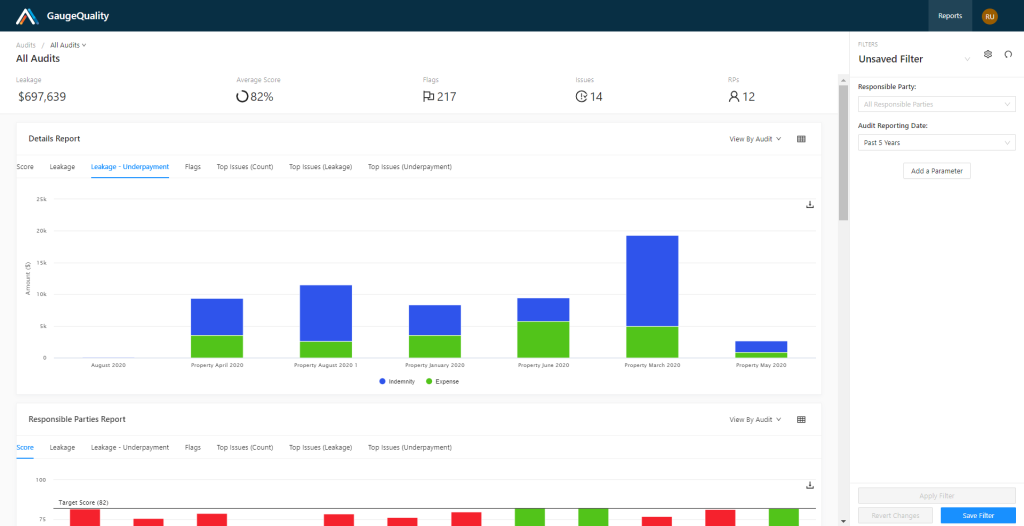Improve underwriting performance with a modern quality & compliance suite
Underwriting: Unique to the Property/Casualty industry
The role of the underwriter within the Property & Casualty insurance industry is notably unique across the business landscape. Rarely will you find the function and related responsibilities in other industries. However, high-performing underwriters are absolutely essential to an insurance carrier’s growth and profitability. But what constitutes acceptable underwriting performance and how should it be measured?
Defining the P&C underwriting role
To answer the above question, we need to start by defining the job, which is deceivingly a simple concept:
- Underwriters evaluate applications from potential policyholders and must decide if they fall within the company’s risk appetite.
- Underwriters then analyze the risk profile from the application (and other sources), including both objective and subjective factors, to determine acceptability.
- Finally, they decide whether insurance coverage should be offered, under what coverage terms and at what price.
Underwriting operations imperatives
With the above points in mind, it’s essential that underwriting management has the resources and tools to determine if the underwriting staff is, in fact, operating within established guidelines and procedures. Management must ensure there is consistency across the organization’s risk selection process, which includes adhering to both internal procedures and applicable regulatory guidelines. If these goals are achieved, it should lead to profitable growth while minimizing financial risk and future exposures.
Leveraging quality & compliance to protect the bottom line
One key aspect of promoting underwriting success is the development of best practices and process improvement protocols, commonly referred to as underwriting “quality assurance” (QA) and compliance. Underwriting QA involves regular reviews of both individual and team performance by auditing a sample of recent policies, premiums and processes to determine if they align with company and industry standards.
The problem with comprehensive underwriting audits is that they historically required considerable time and resources—a product of antiquated tools and the manual processes that are typically retrofitted to modern insurance workflows. And most audit tools require the ongoing support of an already over-burdened IT department.
In a nutshell, traditional underwriting quality programs are hindered by:
- Antiquated legacy technology
- Manual processes and protocols
- Overreliance on IT support resources
- Poor access to data and relevant information
- Difficulties promoting internal “change management”
- Inability to leverage organizational Insights and training opportunities
- The time & expense of dedicated audit staff and underwriting personnel
Current underwriting workflows found to be lacking
In a recent survey of hundreds of underwriters conducted by two well-known insurance organizations, underwriters shared the challenges associated with their carriers’ modernization strategies.
When asked about the top challenges impacting their ability to achieve business objectives, P&C underwriters cited:
- Inefficient processes
- Outdated systems
- Lack of on-demand information/analytics
- Poor access to (or organization of) underwriting information
- Insufficient focus on training/talent development
These responses underscore the need for a renewed focus on underwriting quality (risk/pricing outcomes) via improved workflows with an emphasis on underwriting quality and compliance as a top investment priority.
According to Jonathan McGoran from Risk & Insurance:
“Roughly 60% of underwriters thought improvements needed to be made around the quality of their organizations’ processes and tools…while the areas in most need of improvement included data and analytics, training and skills development, tools for rating and pricing, and the elimination/automation of non-core tasks.”
It’s clear that the underwriting community is weary of aging systems, inefficient processes and underdeveloped AI/automation, all of which contribute to increased workloads in an ever-evolving P&C ecosystem.
Modernizing underwriting audits & compliance
The good news is that, due to advancements in insurtech analytics, AI and data science, digitally-savvy insurers now have better options for SaaS-based solutions that will help them measure and improve P&C underwriting quality and outcomes.
Introducing GaugeQuality for underwriting audits
To help satisfy the growing demand by insurers for innovations that will increase profitability and reduce expenses, Athenium Analytics has released a new audit and compliance suite called GaugeQuality. GaugeQuality leverages 20 years of industry insights and best practices established through working with the world’s top carriers. It provides a modern SaaS performance-improvement framework, built from the ground up, that eliminates the underwriting quality headaches of the past.
GaugeQuality can empower insurers of all sizes to undertake a complete transformation of their audit and compliance programs, and implementing a new underwriting quality suite can now take just weeks, rather than months or years.
Today, any organization can quickly develop and easily maintain a high-performing quality assurance program that provides the following benefits and features:
- Integrated, highly configurable audit modules that support performance improvement
- Automated data import and file selection from any company system or data warehouse
- Configurable questionnaire authoring that reflects your carrier’s underwriting workflows
- Real-time reporting that provides new insights on important underwriting metrics and visibility to staff training opportunities
- User-friendly and self-administered dashboards built to save your team significant time and resources
To learn more about how GaugeQuality can help modernize your underwriting quality workflows, visit the solution page now.


